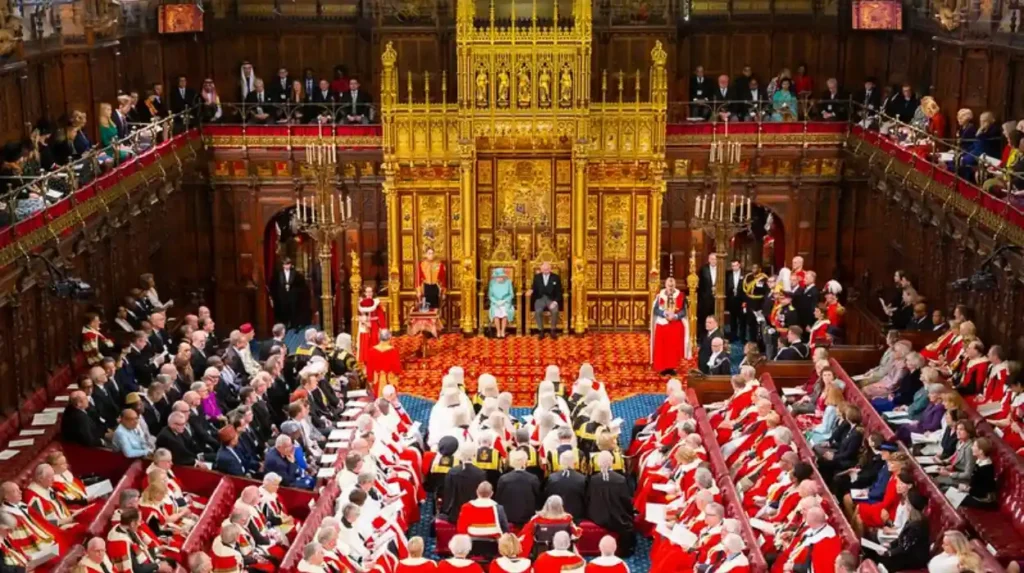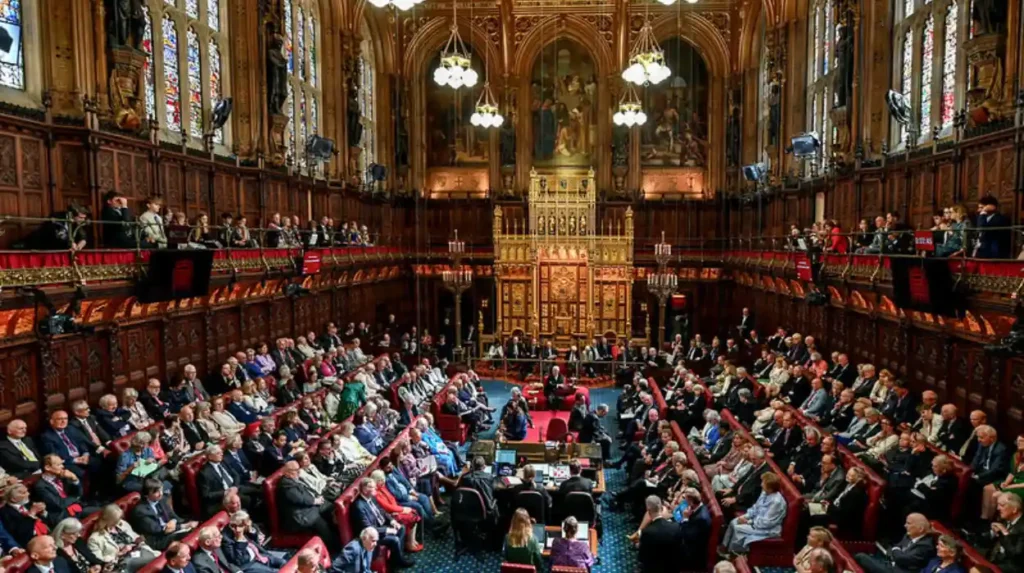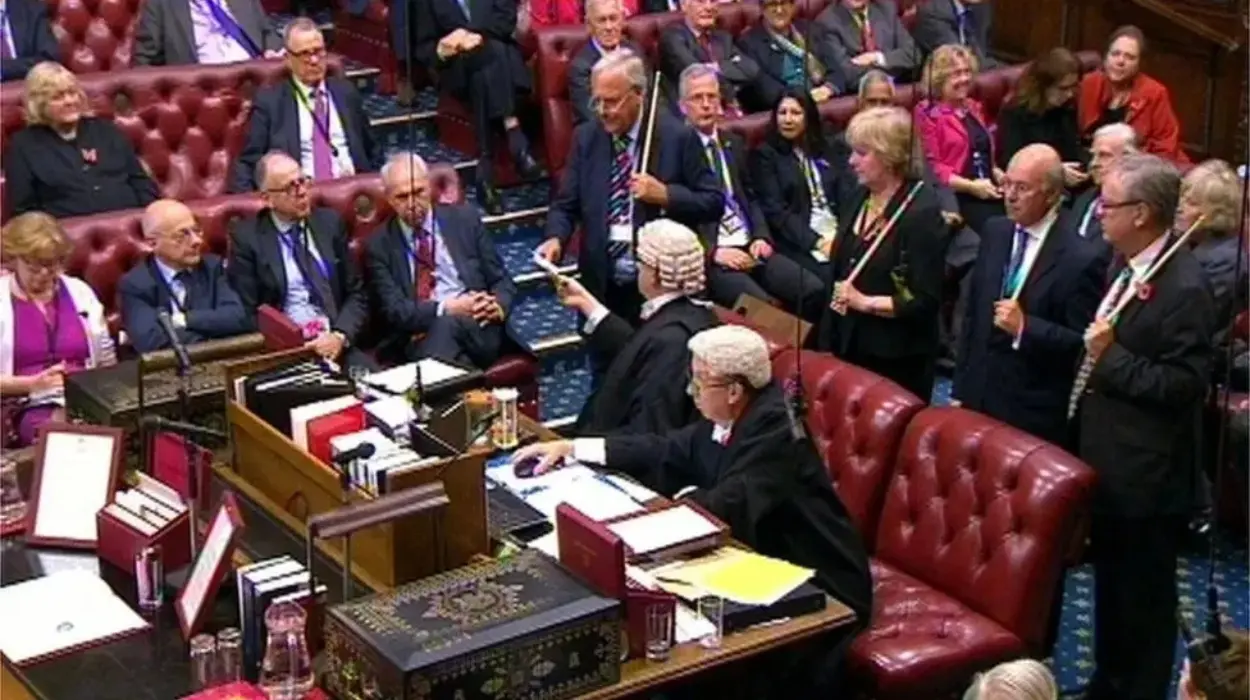A significant turning point in British politics was the House of Lords Act 1999, which established a radical departure from the prior right to membership in the UK’s upper house. Tony Blair‘s Labour government introduced the act to Parliament as part of its agenda to reform Parliament and lessen the power of hereditary peerage. Historians, students of British politics, and any who wish to follow the reforming saga of the House of Lords would deem the House of Lords Act 1999 a crucial landmark. This article goes on to discuss what the House of Lords Act 1999 was about, what it mattered for, and how it is now used to actually create an effect in the political scenario in the UK.
Brief Background to the House of Lords
The House of Lords (the Lords) has represented one-half of the two chambers of the UK Parliament (the other being the House of Commons) for many centuries. For many centuries, the Lords was dominated by hereditary peers: individuals who possessed a title due to the nobility of their family and inherited their seat.
The hereditary principle was always accompanied by remarks about fairness and democracy, particularly as the majority of the members of the Lords had no democratic mandate yet had the power to shape legislation in the United Kingdom.
Prior to 1999, the Lords were composed of life peers, Church of England bishops, and approximately 750 hereditary peers. The continuing presence of hereditary peers undermined the legitimacy of the Lords due to its hereditary privilege as a feature of the Lords as opposed to the collective will of the people. Though reforms had been advocated all throughout the 20th century, important change did not come until the Labour administration of 1997 pushed through with its reform package.

Causes of Change
Several factors contributed to the House of Lords Act 1999 passing:
- Democratic shortfall: Hundreds of hereditary peers were considered undemocratic. They have allowed them to decide national legislation, which contradicts contemporary democratic ideals.
- Upgrades of Parliament: Tony Blair’s administration reconciled British institutions with contemporary democratic ideals. One stride toward lowering old customs that no longer benefited the public was transforming the House of Lords.
- Power Equilibrium: Inheritable peers used to provide the Conservative Party a natural edge in the House of Lords before the bill. The Labour government saw change as a means to build a more balanced and politically equitable chamber.
- Encouragement for more reform: The 1999 legislation was likewise viewed as the beginning of more general constitutional changes. Addressing hereditary peers opened the way for more discussions regarding whether the House of Lords should be elected or modified further.
Main Provisions of the House of Lords Act 1999
The action brought about some rather important alterations to the composition of the House of Lords.
- Most Hereditary Peers’ Removal: Eliminating the automatic right of inherited lords to sit in the House of Lords was the most significant clause of the act. Their number fell from around 750 to just 92.
- Election of Hereditary Peers 92: Rather than a total elimination, a compromise permitted 92 hereditary peers to stay temporarily. Chosen by their fellow hereditary peers, these were meant to last until further reforms were implemented.
- Growing importance of life peers: With decreased inherited peers, life peers, who are appointed based on merit rather than inheritance, become the majority force in the House of Lords. This change gave the chamber a more professional and contemporary vibe.
- Retentivity among Bishops: The act did not alter the function of Church of England bishops, who kept their seats as Lords Spiritual.
Impact on the House of Lords
The structure and functioning of the House of Lords were greatly influenced immediately and over time by the reform.
- Shift in Composition: After 1999, the House of Lords shifted to being largely composed of life peers instead of hereditary peers. Therefore, decisions were based more on expertise, professional experience, and political appointments.
- Political Balance: Removing some hereditary peers that leaned Conservative diminished the automatic Conservative majority that had been enjoyed frequently. This helped make predictable voting patterns much less so.
- Legitimacy of the Chamber: While the House of Lords was still not elected, the Act contributed to the legitimacy of the chamber by eliminating the most undemocratic aspect, that being automatic hereditary membership, making the House a more legitimate revising chamber and no longer just a self-proclaimed bastion of privilege.

Why the Act Mattered
There were also reasons why the House of Lords Act 1999 was important that transcended its immediate change.
- Step to Constitutional Reform: The Act was part of a wider reform agenda of the Labour government that had also included devolution to Scotland, Wales, and Northern Ireland, and the Human Rights Act 1998, and it indicated a watershed moment in the reformation of how British governance was reshaped.
- Decreased Aristocratic Privilege: For centuries, the British Parliament had been largely a product of aristocratic families. The act demonstrated a step towards less hereditary privilege and made overt that political authority should arise from merit and not from birth.
- Greater Accountability: Lowering the power of hereditary peers made the Lords more responsible to current political expectations. Though not entirely democratic, the chamber grew more representative of public service and knowledge.
- Symbol of Progress: The gesture represented a departure from ancient customs and demonstrated to the world that Britain was changing its institutions to reflect modern values.
Criticism to the Act
Though it had success, the House of Lords Act 1999 was not without criticisms.
- Incomplete Reform: Many argued the act was only a halfway solution. Keeping 92 hereditary peers, the reform did not fully remove hereditary advantage.
- Lack of Democratic Elections: The House of Lords stayed unelected, which kept up concerns about democratic legitimacy. Critics contended that the chamber turned into a totally elected second house.
- Temporary Compromise Becomes Permanent: The 92 hereditary peers were meant to remain just till more changes were implemented. Still seated in the chamber decades later, they spark questions about political compromise and incomplete transformation.

Later Debates and Attempts at Reform
Discussions on the future of the House of Lords have been ongoing since the Act of 1999. This law made minor adjustments like letting peers retire and excluding members convicted of major crimes. Several countries have proposed replacing the Lords with a totally elected second chamber. Political conflicts have made this challenging to realize. Some campaigners contend that the House of Lords should be replaced by a new body more representative of the population.
Long-Term Significance
One of the most important constitutional changes in contemporary British history is the House of Lords Act 1999. It changed the makeup of the second chamber, lessened aristocratic supremacy, and opened the door for ongoing discussions on democracy and governance.
Despite not being finished, the act changed how the House of Lords operated and changed the public’s attitude to expectations about fairness in politics. It remains a central reference point for discussions around whether Britain needs to reform again to establish a more democratic upper chamber.


